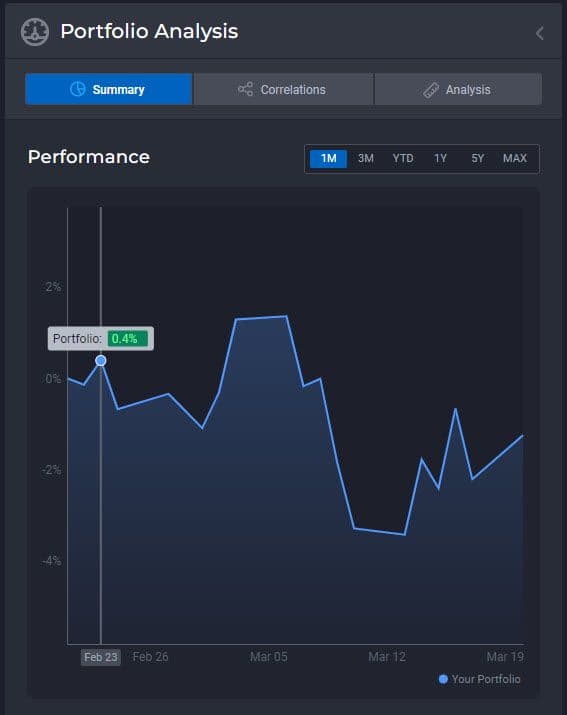Why The Bear Market Could Be Finally Over
**The topic of the current economic state is undoubtedly controversial, and you could argue either way. In fact, even economists and leading experts are torn about the general disposition of the US as well as the global economy as a whole. Nevertheless, the concept of "Bear and Bullish Market" pertains more to the "market sentiment" in the stock market rather than a pure reflection of the economic state of a country. Thus, we can have gloomy economic data, but if investors are optimistic that it will improve soon or this negative data has already been "priced in," then we might see a "bullish run" where stock prices start to go up.
Indeed, we also have seen several market cycles in recent years that include bullish and bearish periods. Currently, the "bear market" has been attributed to a general decline in stock prices, accompanied by pessimism and a lack of confidence over the foreseeable future due to the high-interest rate environment that was caused by excessive government spending during the pandemic.**
Yet, there are several reasons to believe that the bear market could be coming to an end this year. In this article, we will explore five compelling reasons why we think that the bear market could be over and the bullish run could be starting.
1.Strong Economic Recovery
First of all, one of the primary drivers of a bear market is a weak economic environment characterized by low economic growth, high unemployment rates, and diluted corporate earnings. However, the global economy, particularly the US, has shown signs of a strong recovery in recent months.
Moreover, the International Monetary Fund (IMF) expects the global economy to grow by 4.9% in 2023, up from an estimated growth rate of 3.5% in 2022. Lastly, unemployment rates have been declining, and corporate earnings have been robust, boosting investor confidence in the market.
2. Technology Sector Growth
Second, the technology sector has been a significant driver of the stock market in recent years. Generally, technology companies are among the first to react to the changing market sentiment. As a result, they are one of the biggest losers in a bear market, but at the same time, they are also among the top industries to invest in during a bull market.
Specifically, Apple, Microsoft, and Amazon have a cumulatively high-weight share in both S&P 500 and NASDAQ. In addition, the pandemic has accelerated the technology sector's growth, with many people shifting to remote work and e-commerce. Moving forward, the technology sector is expected to continue its growth trajectory, providing a massive boost to the stock market.
3. Pent-Up Consumer Demand
Thirdly, during the pandemic and until 2022, many consumers were forced to cut back on spending due to job losses and economic uncertainty. However, as the economy recovers, there is expected to be pent-up demand for goods and services that were either put on hold during the pandemic or have seen a massive decline in demand. Hence, we now see a rejuvenated demand for businesses in various vital sectors, including travel, entertainment, and hospitality, previously the ones that suffered the most during the pandemic.
4. Improving Global Trade
As we can all remember, the pandemic caused a massive disruption in global supply chains and has led to an enormous decline in international trade. However, as global economies are almost fully reopened, global trade is expected to return to its pre-pandemic levels. This boosts companies that rely heavily on international trade, which includes many of the publicly-listed companies.
5. Higher Highs and Higher Lows
Lastly, and perhaps the most visually compelling reason to believe that the bear market is over and we are now seeing the start of a refreshed bull market is by looking at the S&P 500's price movement (benchmark). As we can see, the market has been trending higher and higher and has been making higher highs and higher lows. This is indicative that the bear market is indeed finally over.
 Bear 2.jpg
Bear 2.jpg
Conclusion
All in all, there are several compelling reasons to believe that the bear market could be over and that the bullish run could be starting. The strong economic recovery, growth in the technology sector, pent-up consumer demand, improving global trade, and the S&P 500's price movement are all promising signs that suggest a brighter outlook for the market.
However, it is essential to note that the market is always subject to unexpected events and uncontrollable factors, such as a "Black Swan" in the form of the COVID-19 pandemic, which could potentially disrupt our positive trajectory. Therefore, staying vigilant and informed is crucial. Fortunately, there are now data visualization tools such as ETF Insider that help us do our due diligence and make sure we are well diversified across multiple industries and avoid overexposure and excessive fund overlaps that could detrimentally impact our investment over the long term.
Get started




